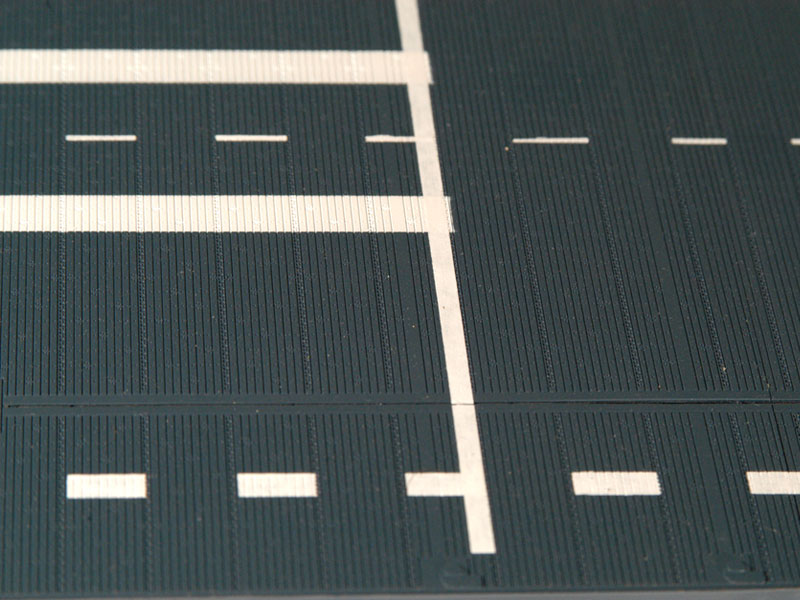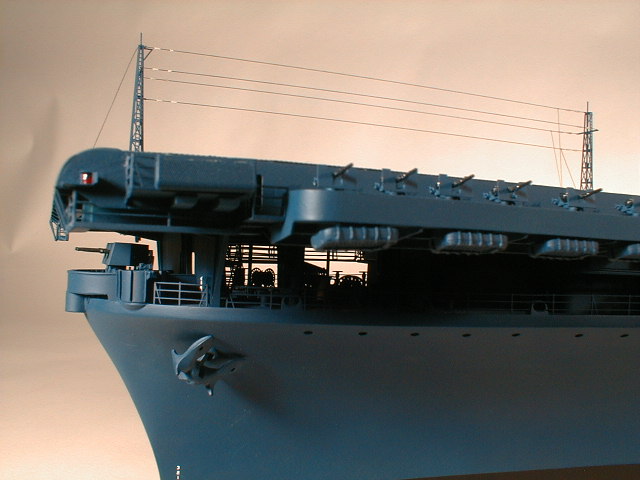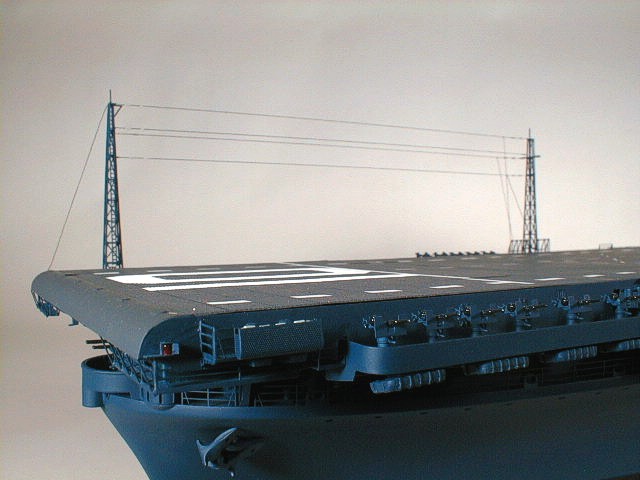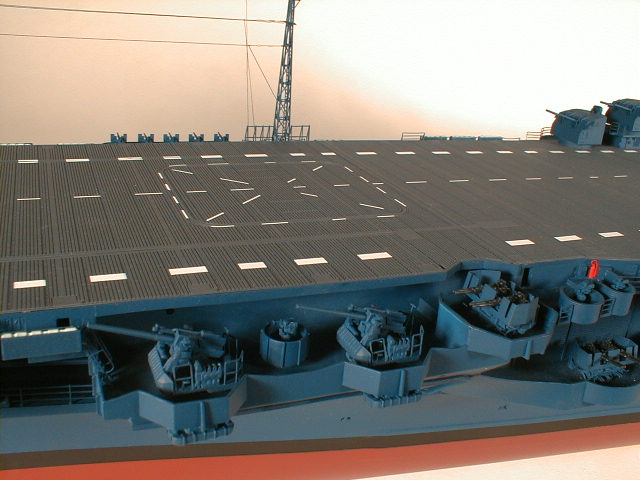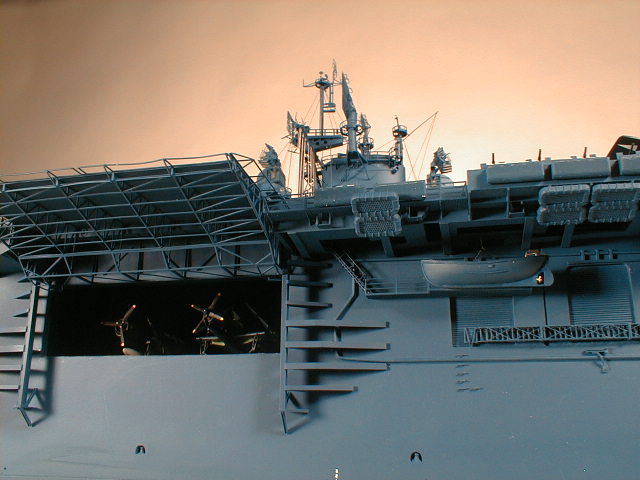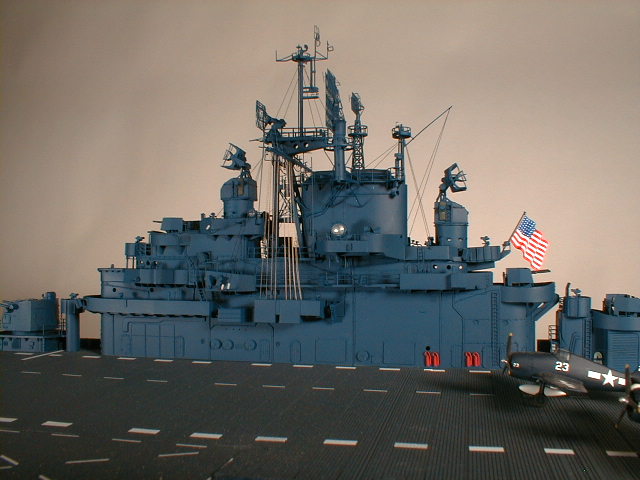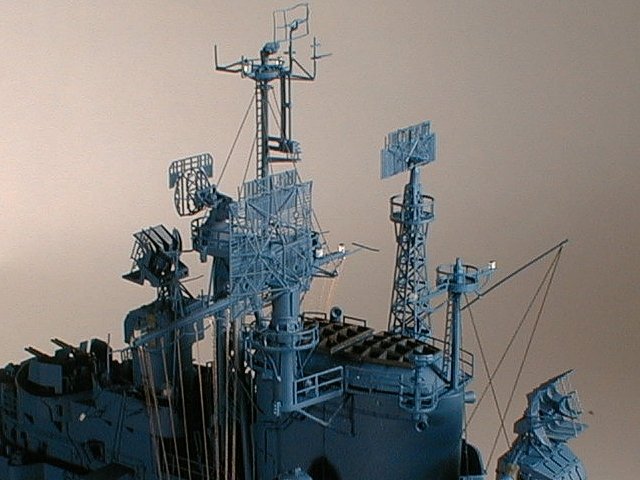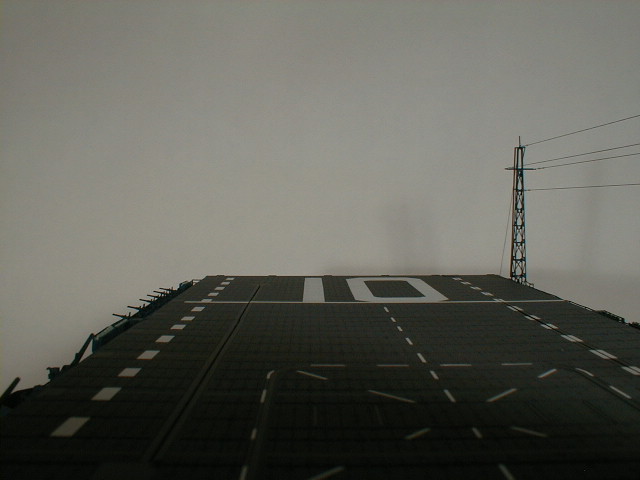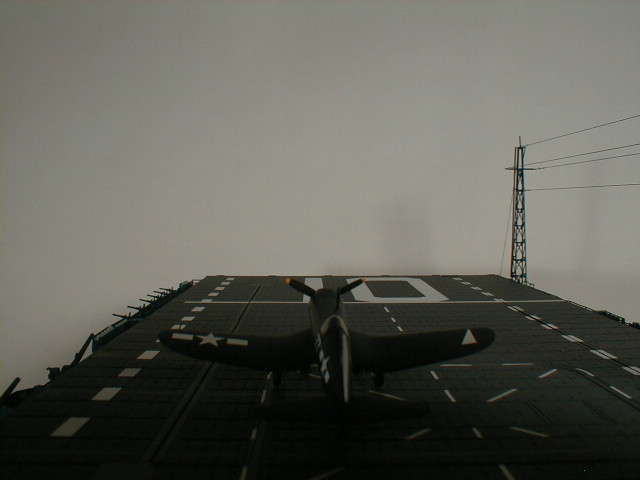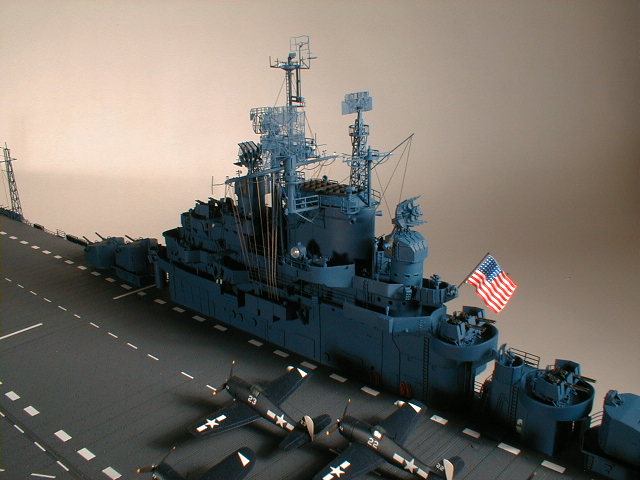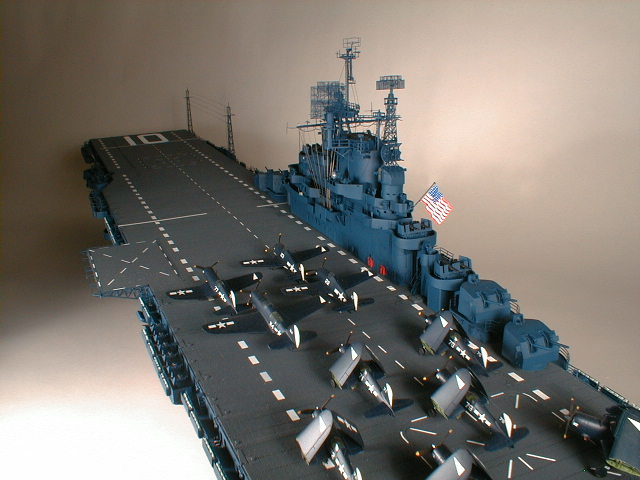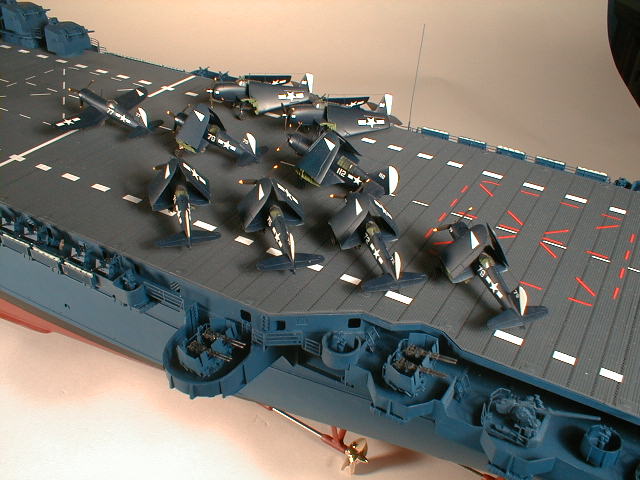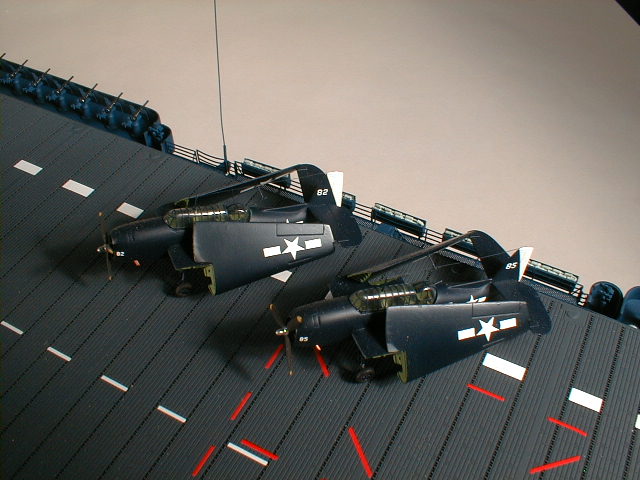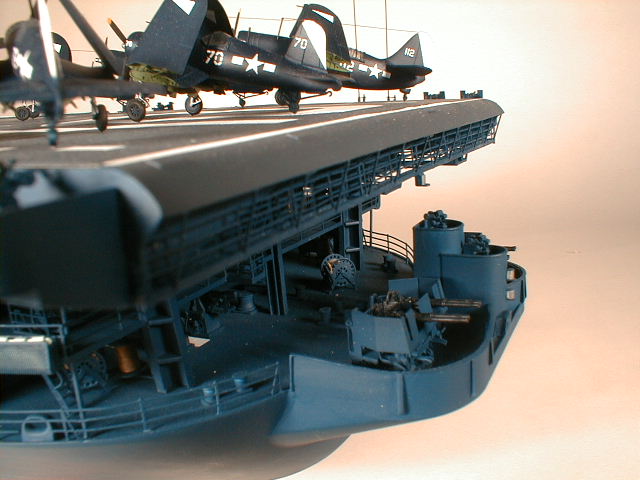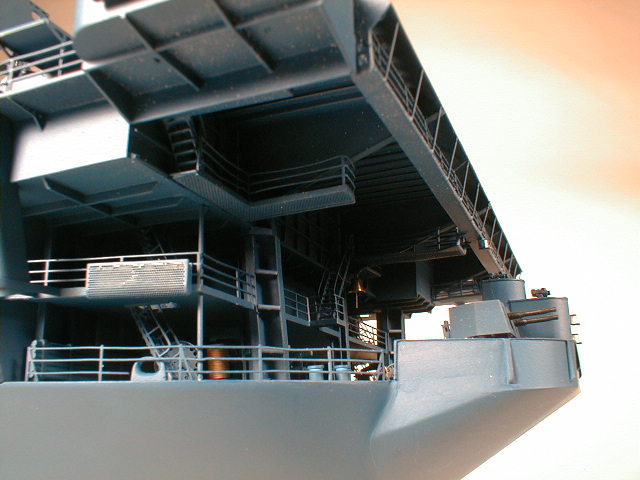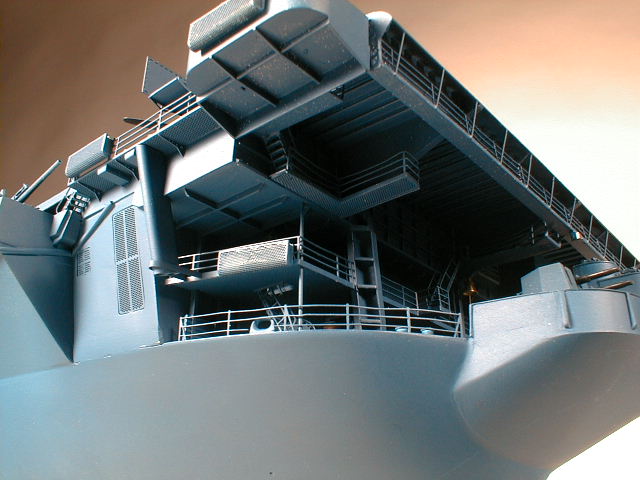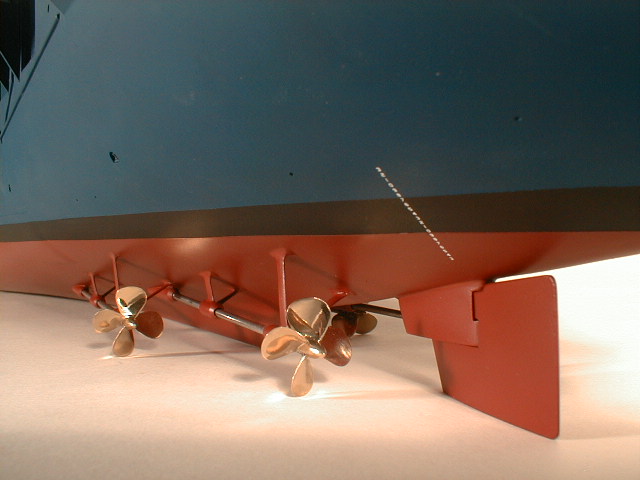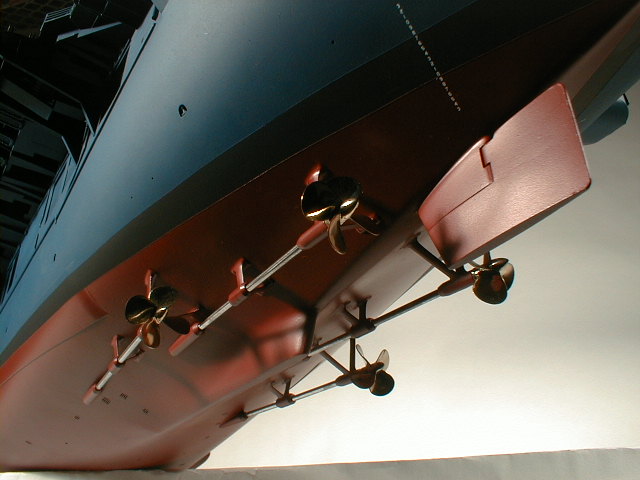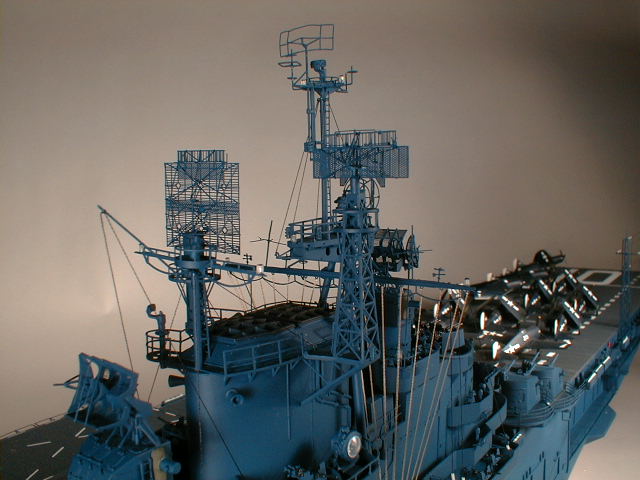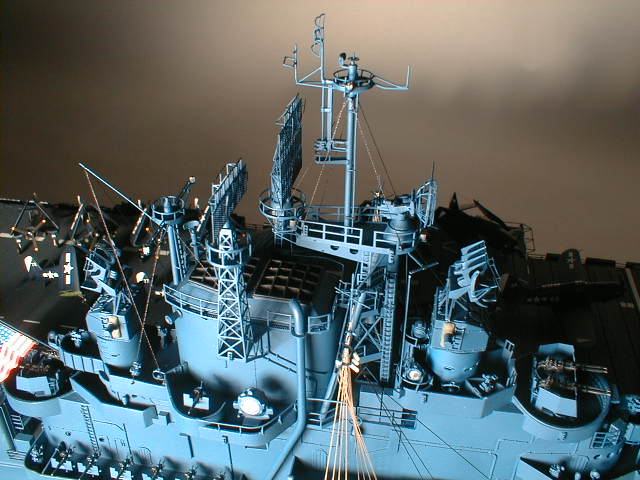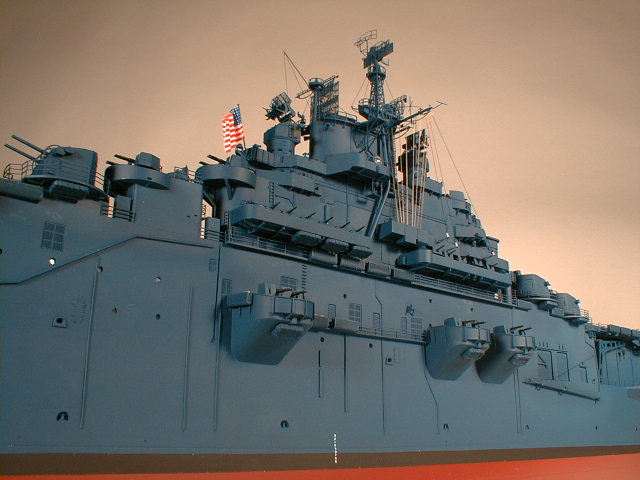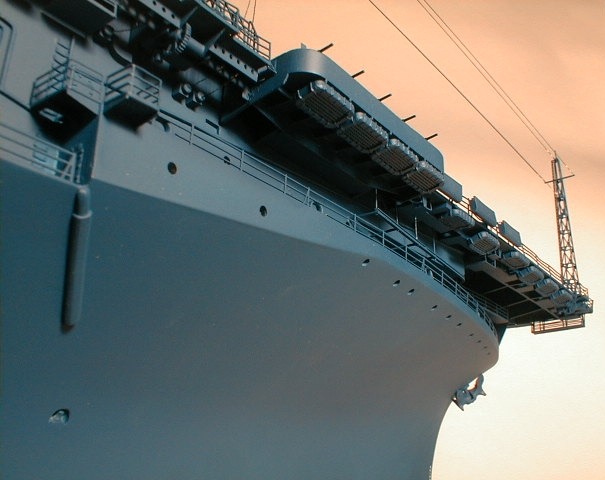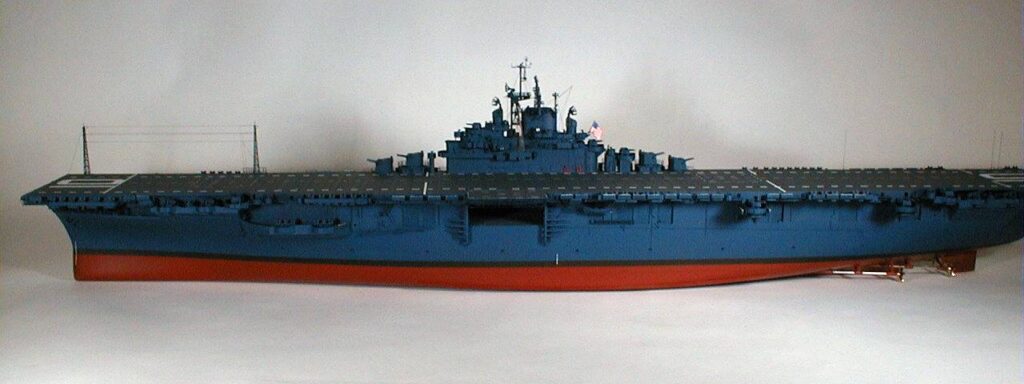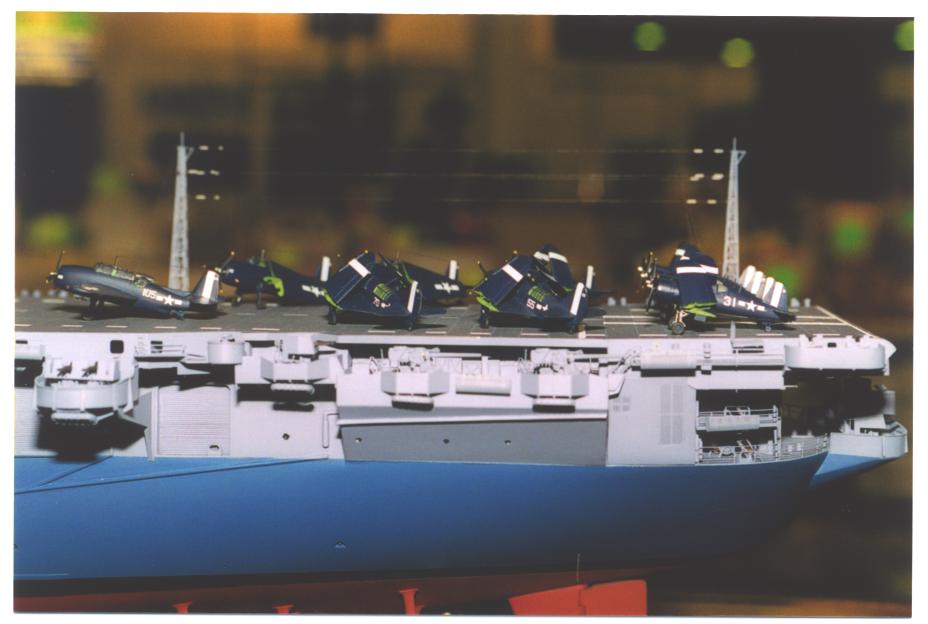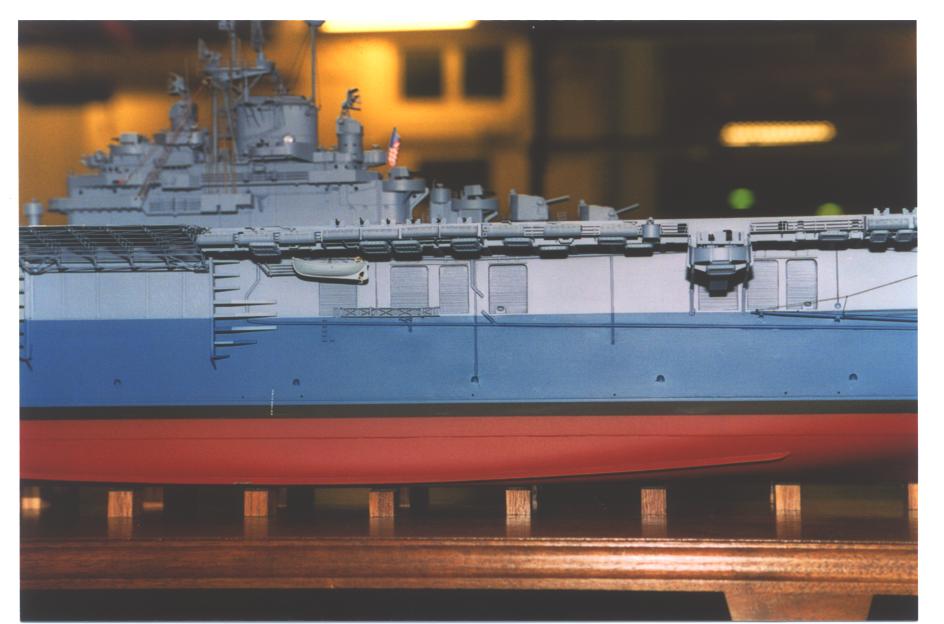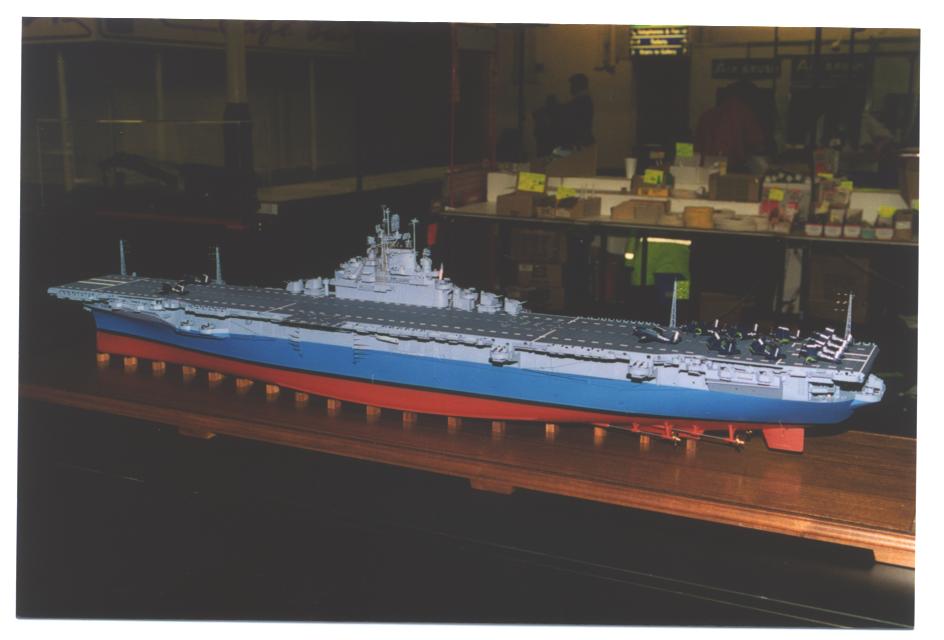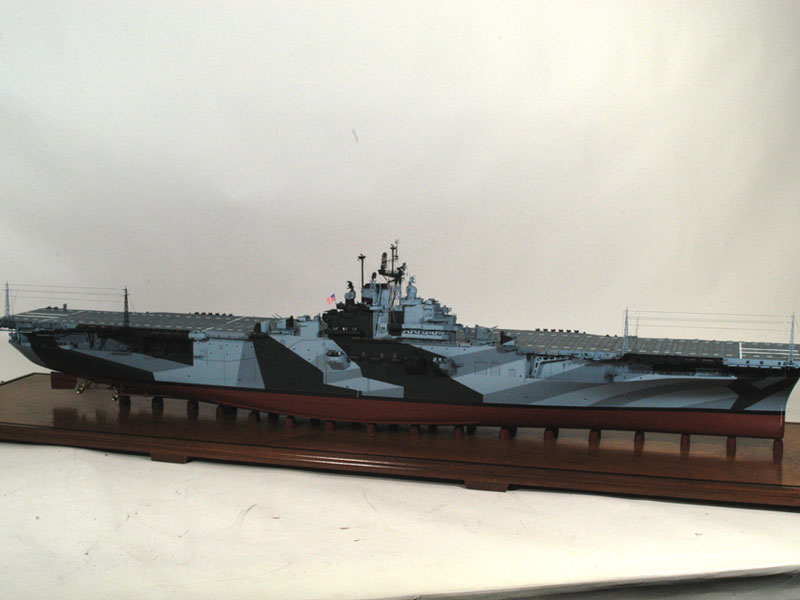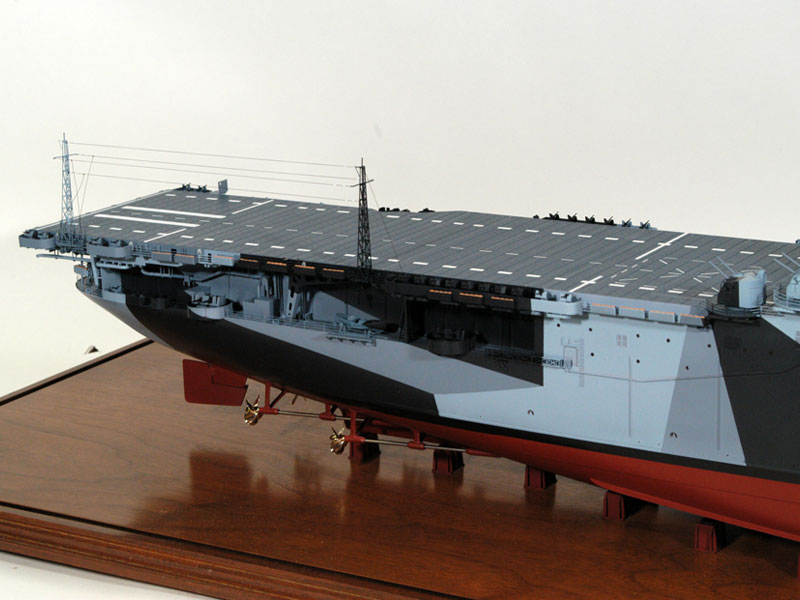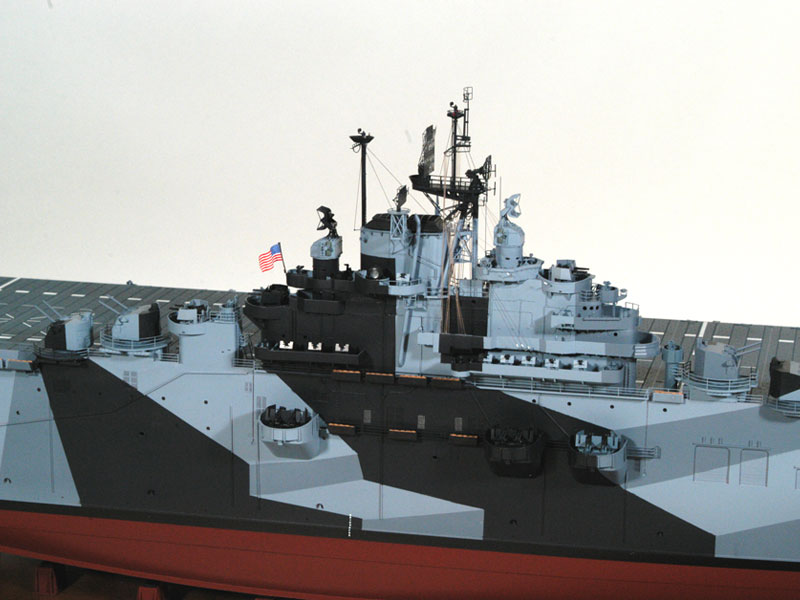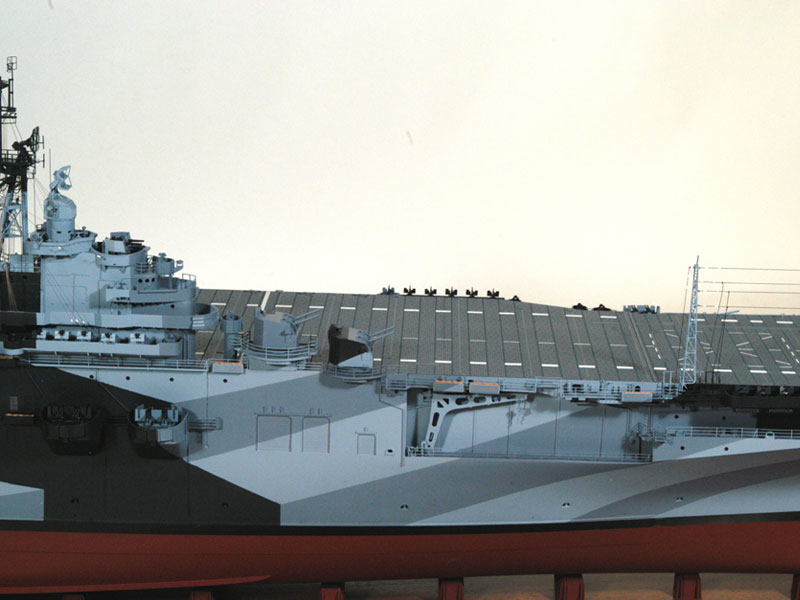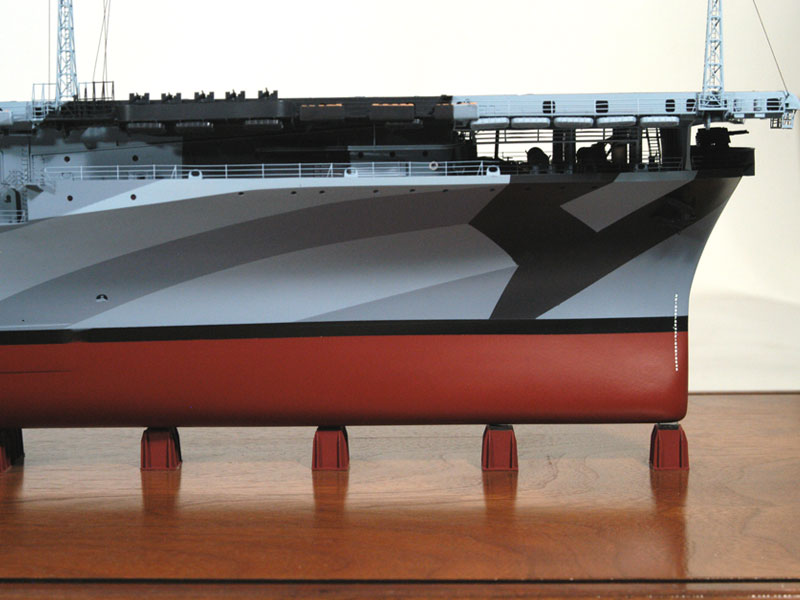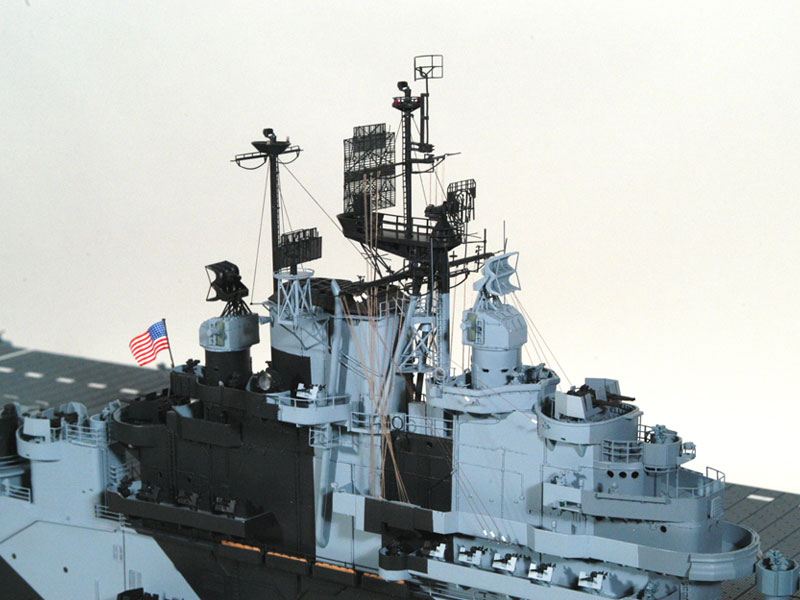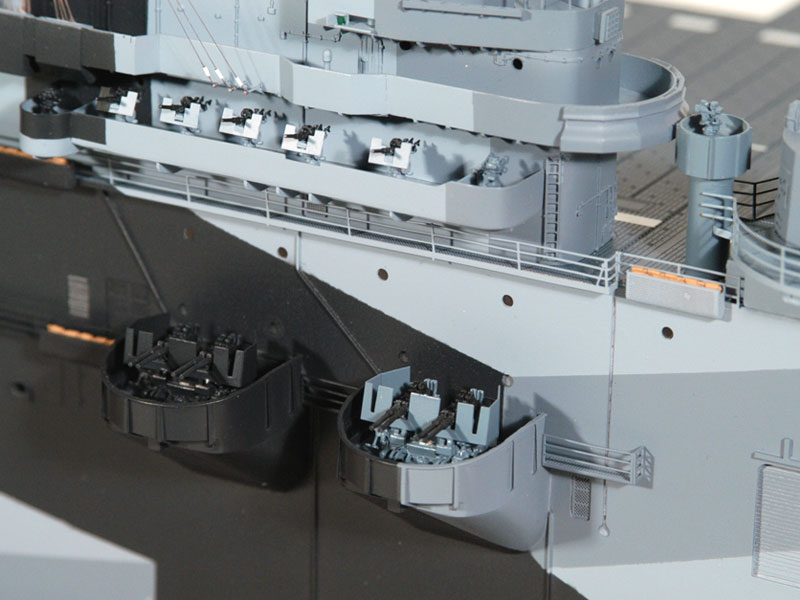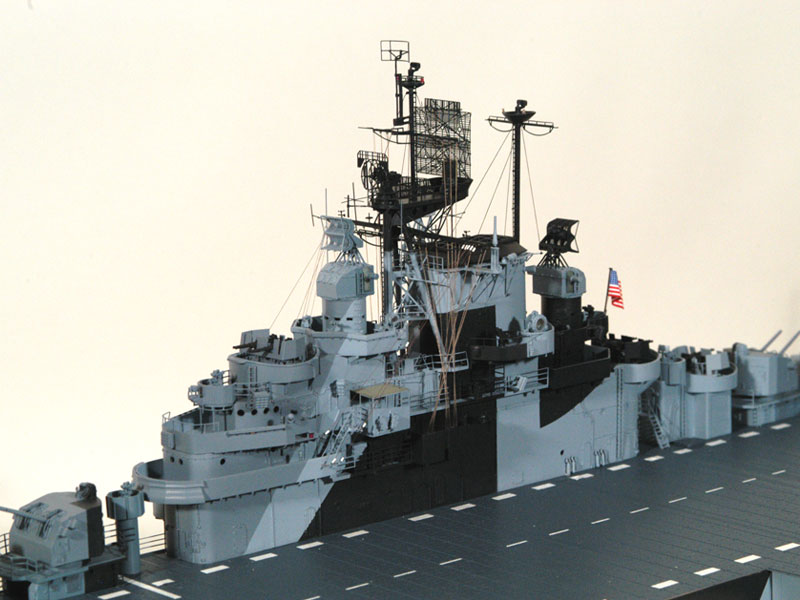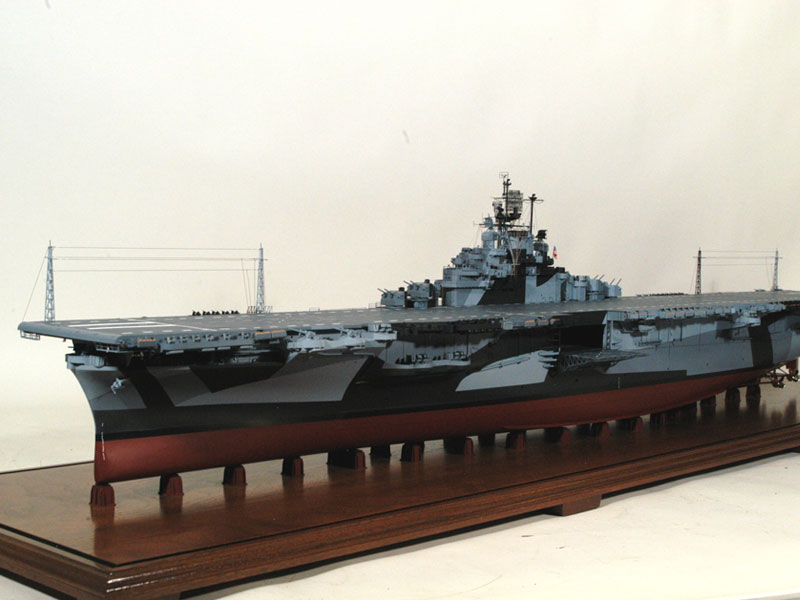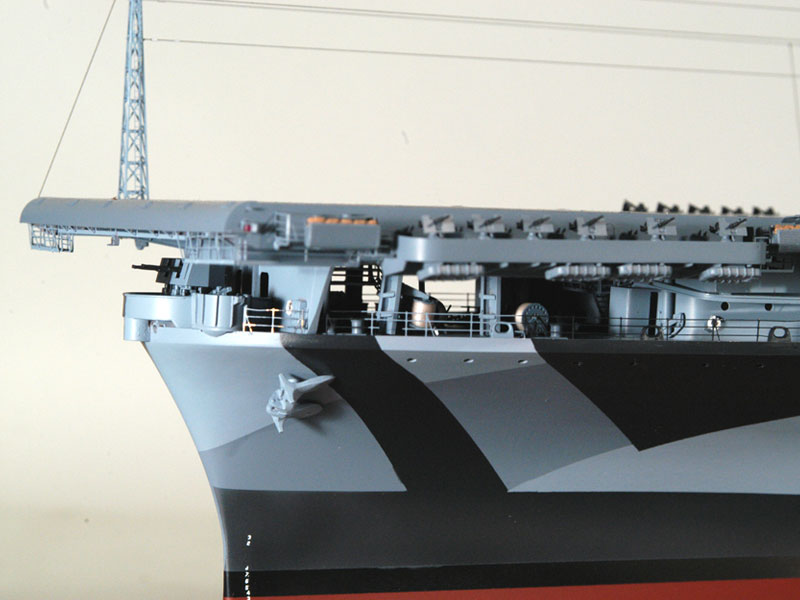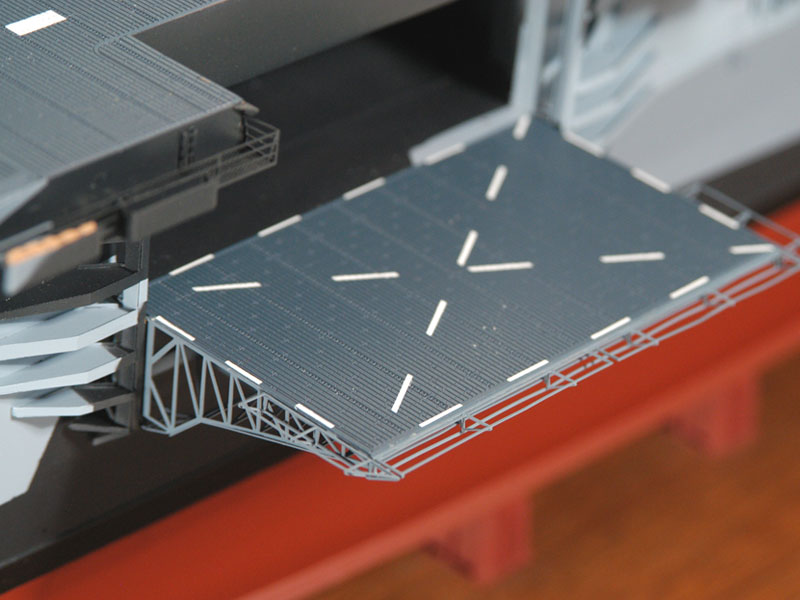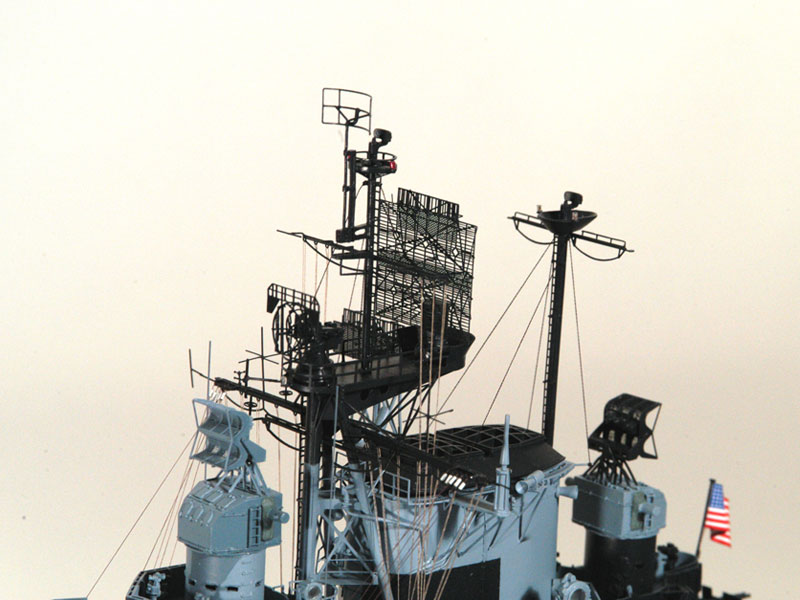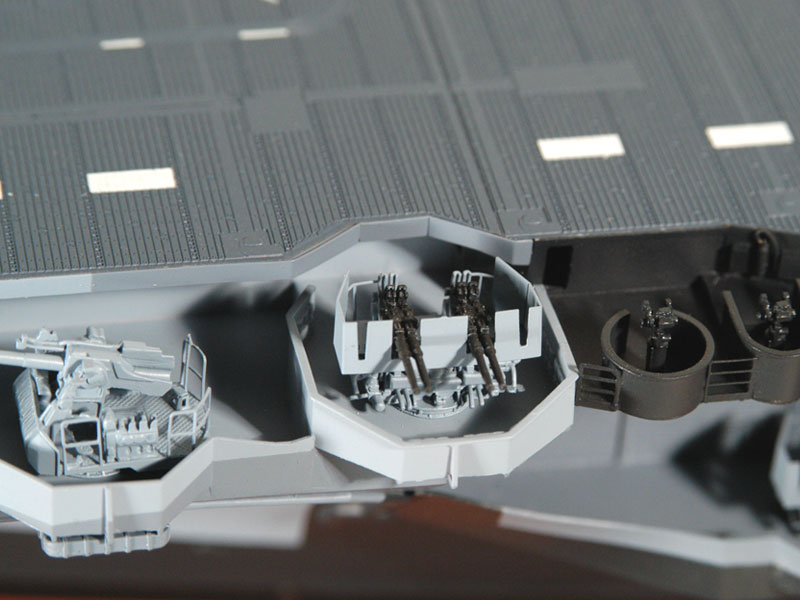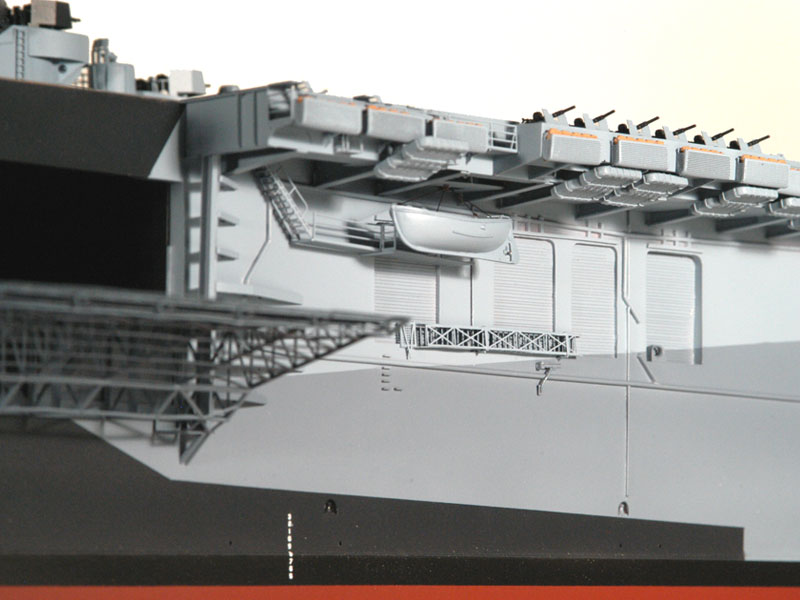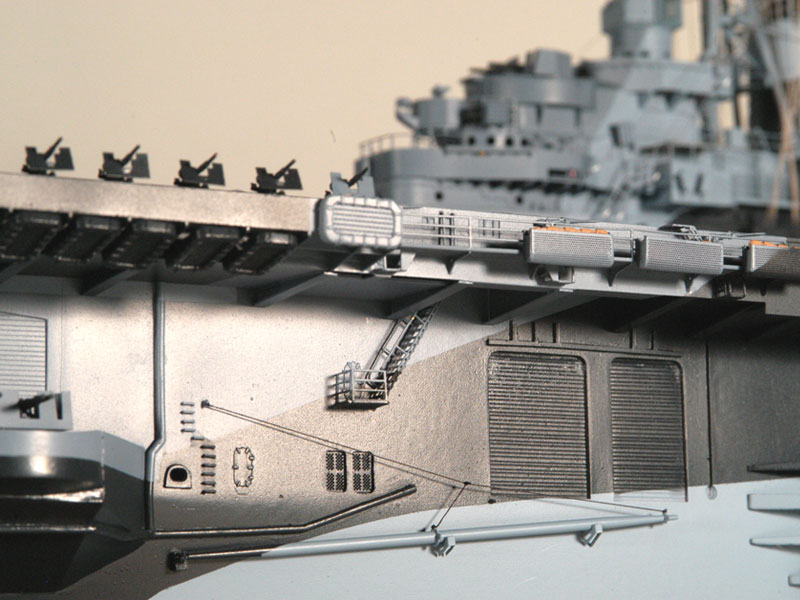Essex Class
Essex-Class Carrier – Yorktown
- Scale: 1:192
- Release: 1998
- Limited Edition: 25
- Model Size: 58”L x 11”W x 12”H
- Base Type: Black Walnut
- Base/Case Size: 62”L x 14”Wx 14”H
- Availability: Sold Out
Essex-Class Carrier – Intrepid
- Scale: 1:192
- Release: 1998
- Limited Edition: 25
- Model Size: 58”L x 11”W x 12”H
- Base Type: Black Walnut
- Base/Case Size: 62”L x 14”Wx 14”H
- Availability: Sold Out
Essex-Class Carrier – Intrepid Camouflage
This is one of the most difficult camouflage schemes to execute and we feel we have achieved our goal, to perfection.
- Scale: 1:192
- Release: 1998
- Limited Edition: 10
- Price: $16,500
- Model Size: 58”L x 11”W x 12”H
- Base Type: Black Walnut
- Base/Case Size: 62”L x 14”Wx 14”H
- Availability: 1 Available
“The ships that won the war” were the fleet aircraft carriers of the Essex class. At 24 units, the largest class of capital ships built during the 20th century, the Essex-class carriers were some of the most successful.
In warfare, the deployment of a decisive technology can determine the outcome. In the Pacific theatre of World War II, the decisive technology was the carrier-borne airplane. The Japanese demonstrated its possibilities in their attack on Pearl Harbor. And the Battle of the Coral Sea was the first naval battle in history in which ships of the opposing sides never came into sight of one another. In June 1942, US carrier-borne aircraft unexpectedly sank four (4) Japanese carriers on a single day at the Battle of Midway. The United States took the offensive thereafter, with an ever-increasing number of new aircraft carriers as the centerpieces of its effort to bring war to the Japanese homeland.
At more than 800 ft. in overall length, fleet carriers (CVs) were the largest of these. Eleven (11) ships, of the design that became the Essex class, were authorized in 1940. By the war’s end, seventeen (17) new fleet carriers had been commissioned, all of them Essex class ships, and seven (7) more sisters were completed after the war. Their design was excellent – effective, reliable and versatile. Their mass production reflected both the enormous industrial capacity of the United States and standardization and simplification of production methods. One ship, USS Franklin, was completed in just under fourteen (14) months. As built, they displaced more than 27,000 tons (more than 36,000 tons fully loaded) and, at 150,000 shp, they could exceed 32 knots on trial. Their range was also outstanding: 20,000 nautical miles at 15 knots. Normal complement, including air groups, was about 3,200 officers and men.
They were virtually without armor – designers expected their regular complement of 90 aircraft to provide for both offense and defense. This paid off during the air battle for Saipan, when their aircraft shot down nearly 400 Japanese planes in one day. Although some suffered severely when hit later during suicide attacks, none were lost. After the war, their flight decks were strengthened to handle jet aircraft and angled to speed operations, recover damaged aircraft, and provide for round-the-clock capability. Thus modernized, many served even into the seventies, e.g., as recovery ships for the space program. Four (4) have been preserved and are now open to the public USS Yorktown (CV 10) in Charleston, USS Intrepid (CV 11) in New York, USS Hornet (CV 12) in Alemeda, California and USS Lexington (CV 16) in Corpus Christi
Fine Art Models
Fine Art Models spent more than two (2) years researching the Essex class carrier. There were two (2) versions during World War II, ten (10) with short hulls and the remainder with long hulls, which had extended bows but a shorter flight deck (to provide the forward anti-aircraft guns with a wider arc of fire). After building a short-hull prototype from official US Navy plans for the Intrepid, we understand why there has never been such a carrier model offered by anyone prior to this. These ship models are as complex in design as any we know of – from tie-down hooks on the decks, to under-deck detail, to ship-specific radar suites.
We started our production with Yorktown (CV 10) and Intrepid (CV 11), and will continue with other short-bow units including Essex (CV 9), Hornet (CV 12), Lexington (CV 16), and Wasp (CV 18). Later we will add long-bow units including Ticonderoga (CV 14), Randolph (CV 15), Hancock (CV 19), and Princeton (CV 37). Eventually, we will include all ships of the class in our limited edition, but look forward to satisfying the preferences of those who order early.
Each model comes with 1:192 aircraft, including the Corsair, Avenger, Helldiver and Hellcat. The detail on the planes includes cockpit interiors, antennae made with a human hair and complete underbody detail including wheel wells.
